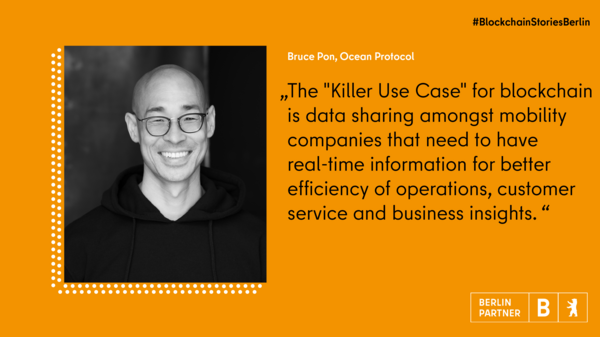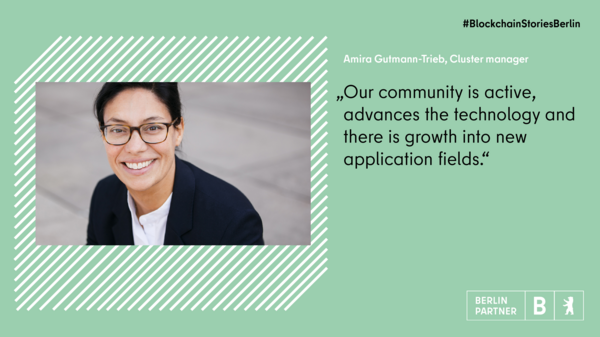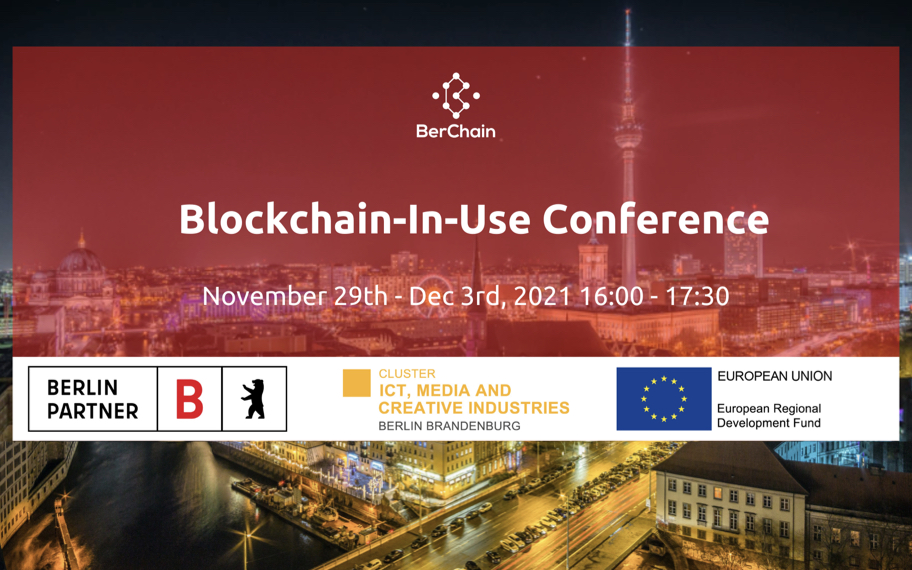Last year's Blockchain-in-use Conference already impressively proved how broad and diverse the use cases in the blockchain sector are. This year, the conference organised by the Berlin network BerChain and Berlin Partner for Business and Technology once again has a lot up its sleeve: From 29 November to 3 December, all blockchain enthusiasts and those who want to become one can now register for the slots of the five-day online conference. The following slots will take place:
Blockchain in Use Track - Self Sovereign Identity on 29.11.
Blockchain in Use Track - Decentralised Finance on 30.11.
Blockchain in Use Track - Non-Fungible Token on 1.12.
Blockchain in Use Track - Public Administration on 2.12.
Blockchain in Use Track - Sustainabilty on 3.12.
In preparation for this year's conference, we take a look back at last year and talk to some of the experts from the different tracks as well as the organisers.
Prof. Dr.-Ing. Katarina Adam will be the first to speak. She teaches investment and financing, controlling and business administration at HTW Berlin, as well as possible applications of blockchain technology in project groups. She is also involved as a member of the board of the German Blockchain Association. She was part of the IoT track at the Blockchain-in-use conference.
- You were part of the IoT track at the Blockchain-in-use conference 2020. What was your key finding from the discussion you had with Dr. Stephan Noller, Marcus Jones and Dr. Carsten Stöcker?
The maturity of the use cases of the respective companies represented by the panelists. Digital twins, ever-increasing data volumes and constantly growing requirements for the secure storage of relevant data show the need to think hard about blockchain solutions and to work on model solutions that can later be used by other companies / industries.

2. Which applications do you think are currently the most promising in the field of blockchain in connection with IoT? Which ones did you discuss at the conference that stick out for you?
The networking and perhaps also the merging of blockchain - IoT and cyber security. Dr. Stephan Noller gave very interesting examples (e.g. the hacker attack on a waterworks). This was supposed to pay a ransom, if not, the residents supplied by this waterworks would be poisoned because they would have control over the entire hardware and software.
3. What makes the BerChain conference special to you?
In addition to the good speakers, the illustration of diversity: Thus, one could inform oneself about five highly important areas and exchange ideas with speakers with a high reputation. Practical and theoretical insights from first-hand experience! Awesome!!
Bruce Pon is the founder of BigchainDB and Ocean Protocol, blockchain startups focused on bringing data and AI together since 2013. He has been featured in several Blockchain courses as a guest expert. At the Blockchain-in-use Conference, he was an expert at the mobility track.
- Hi Bruce! You shared your expertise for blockchain in mobility at last year’s Blockchain-in-use conference. What did you take away from the panel discussion at the end of the round? What is your personal “killer use case for blockchain in mobility”?
My takeaways:
- The support of the EU, Berlin Partner and all the subsidy and investment programs pay off. BigchainDB and Ocean Protocol would not exist without the early support of government.
- Blockchain innovation is moving at 100x the pace of enterprise adoption. This pace will allow startups to eventually outrun and disrupt existing legacy companies.
- The integration of blockchain into the mobility sector will be complex, long and difficult - but it will serve as a unique selling proposition if Germany can be the first to deploy blockchain based systems for payments and data sharing.
The "Killer Use Case" for blockchain is data sharing amongst mobility companies that need to have real-time information for better efficiency of operations, customer service and business insights. The sooner that companies can open up their data safely and securely, the sooner they can reap the benefits.

Stani Kulechov is the founder and CEO of the DeFi protocol Aave, a decentralised, open source and freely available protocol for creating money markets on Ethereum. An absolute expert in the field, Stani was part of the finance track at the Blockchain-in-use conference.
1. Stani, you were part of the first day of the Blockchain-in-use conference at the Financial Services Track. What was your takeaway from your panel round?
I really enjoyed the Blockchain-in-use conference Financial Services panel. For me it was interesting to discuss how a bridge is being built between decentralised finance and the FinTech world, bringing us closer to reaching mass adoption in financial services. To me, the future of finance is one in which people can really choose what finance looks like to them. You don't just have to choose between a limited number of banks and be stuck with that, but you really have more opportunities and access to different financial tools and services, and there are so many innovative use-cases in this space.
As organisers of the Blockchain-in-use Conference, Silvan Jongerius (BerChain) and Amira Gutmann-Trieb (Berlin Partner) are particularly pleased about the many use cases that were discussed over the four days. How do they look back on it and what did they themselves find most exciting?
1. Amira, you organized the conference together with Berlin Partner and BerChain. Which blockchain cases discussed at the conference do you personally find most exciting and also promising?
First, the joint organization together with BerChain as a strong partner of the blockchain community here in Berlin made this event so exciting, Berlin is Europe’s blockchain capitol. It was our aim to show five application tracks of Blockchain/DLT technology and this happened. The most unusual track was Blockchain in the Public Administration.
2. What about you, Silvan? Do you have a personal favorite?
The IoT related use-cases are really close to my heart, as security is such an important component, and blockchain can play a major role securing data of connected devices. I run a data protection consultancy for deep-tech and we see so many problems within IoT that blockchain can aid to resolve.
Other than that, the financial services use cases, in particular those enabling underprivileged groups to access global finance, be it stock trading, value exchange or trades, really excite me. It is utmost important to create equal opportunities and build an inclusive financial ecosystem, and blockchain can play a big role here.
3. What makes the conference so special to you, Amira?
The conference underlined the strength of the blockchain Ecosystem in Berlin. Our community is active, advances the technology and there is growth into new application fields. The conference reflected this growth. I mentioned the public administration track, the Use Case “Digitalization of Report Cards using Blockchain” shows the advancement of digitalization in the public sector. The project highlights the significant step the administration is taking beyond planning for digitalization to the actual application of innovative technologies through a roll-out of digitalized report cards in Berlin Schools.

4. In no time at all, you have made the conference into an online alternative. What are the perks of having an online / hybrid conference compared to a live one, Silvan?
While it is a shame that we didn’t have the possibility to do a large scale in-person event, the turn-out was really good and the online/hybrid format allowed us to reach a much broader audience, also outside of Berlin, and even outside of Germany. We had speakers and guests from many countries and that aided in more diverse and interesting conversations. From an organizational point of view, it has been easier to manage too, we didn’t have to fly in speakers and organize physical elements for 4 out of the 5 days, and capacity for the online platform was virtually unlimited.
5. The Blockchain-in-use conference brings together blockchain experts as well as experts from the different fields of application. What is the advantage of this gathering of concentrated expertise at one conference, Amira?
As a new technology is applied in different markets, new knowledge comes to light and new expertise is created. Bringing together experts from different fields that might not meet in their daily work-life means there is a chance to exchange this know-how this is affectionately referred to as cross-pollination it is one of the greatest opportunities for innovation and growth. We initiated this interaction through the conference with the hope the exchange continues beyond.
You can watch last year's teaser video here:




